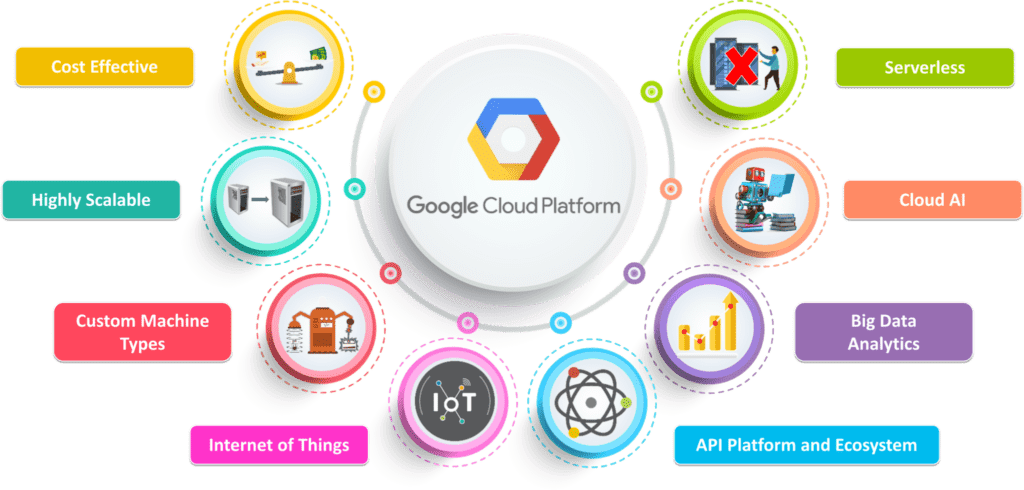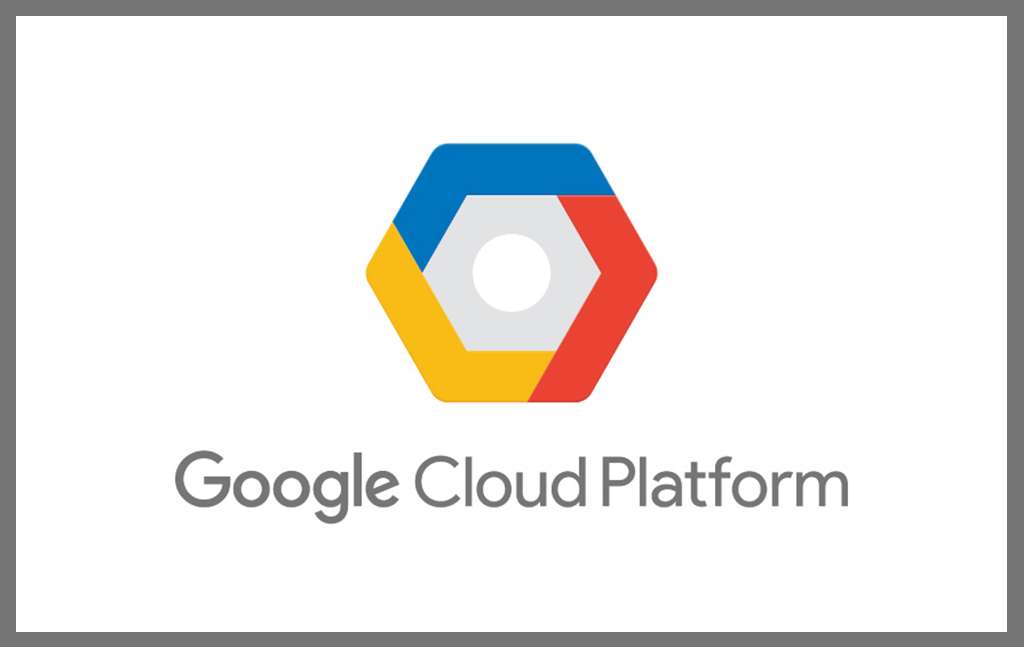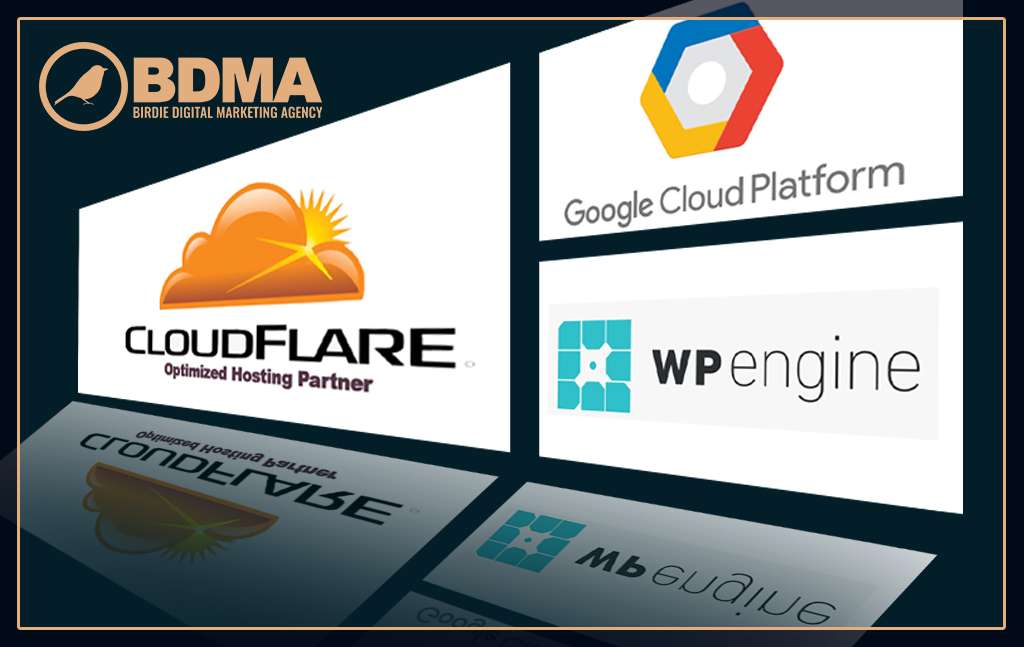Have you ever heard of YouTube? How about Gmail or Google Maps? Most likely the answer is yes, but you may not have heard of Google Cloud Platform (or GCP).
GCP is the Hosting framework that Google uses to deliver all these applications making it a framework you surely want to use also. For most businesses the issue is the cost. Being such an elite level framework, it becomes an unlikely expense when working with a budget, but that’s where we come in. As GCP Partners we’re able to give you the same technology Google uses for practical prices. In this article we will break down what GCP is exactly, and in this you will discover the power of it and why you need it.
Let’s get started!
What is GCP?

GCP is a public cloud vendor — like competitors Amazon Web Services (AWS) and Microsoft Azure. With GCP and other cloud vendors, customers are able to access computer resources housed in Google’s data centers around the world for free or on a pay-per-use basis.
GCP offers a suite of computing services to do everything from GCP cost management to data management to delivering web and video over the web to AI and machine learning tools.
Google Cloud vs Google Cloud Platform
In order to help organizations go digital, Google Cloud includes a combination of services available over the internet that can help. Google Cloud Platform (which provides public cloud infrastructure for hosting web-based applications and is the focus of this blog post) is a part of Google Cloud.
Other Google Cloud Services Include
Google Workspace, formerly known as G Suite and Google Apps. This product provides identity management for organizations, Gmail, and collaboration tools.
Enterprise versions of Android and Chrome OS. These phone and laptop operating systems are ways for users to connect to web-based applications.
Application programming interfaces (APIs) for machine learning and enterprise mapping services. These provide software-to-software communication.
While Google’s GCP cloud infrastructure is the backbone of applications like Google Workplace, these applications aren’t what we’re talking about when we talk about GCP. For this post, we’re focusing on Google Cloud Platform.
Google Cloud Platform History
Backing up a bit, let’s start with the history of GCP.
GCP first came online in 2008 and was known as App Engine. In April 2008, Google announced a preliminary release of App Engine, which was a developer tool allowing customers to use their web applications on Google infrastructure. (For context, this was a couple years after Amazon had launched its cloud computing service, starting with the release of S3 cloud storage and EC2.)
The App Engine goal, According to Google, was to “make it easy to get started with a new web app, and then make it easy to scale when that app reaches the point where it’s receiving significant traffic and has millions of users.”
At first there were 10,000 developers that were granted access in order for Google to receive feedback. These early-adopter developers could run apps with 500 MB of storage, 200 million megacycles of CPU per day, and 10 GB of bandwidth per day.
It didn’t become a fully supported Google product until late 2011 when it was pulled from preview and made public. A decade later, Google has built and acquired more services and products to enhance the user experience of its cloud platform.
Today, Google Cloud Platform is one of the top public cloud vendors in the world. Google Cloud customers include Nintendo, eBay, UPS, The Home Depot, Etsy, PayPal, 20th Century Fox, and Twitter. That’s quite a list of big brands. That should tell you something.
Google Cloud Platform infrastructure, Zones & Regions

Google’s global infrastructure currently has 146 locations around the world where Google Cloud Platform resources are offered. As you can see they’re not done yet and will continue growing.
Locations start with a region and within a region are availability zones. These zones are isolated from a single point of failure. Some resources such as the HTTP global load balancer are global and can receive requests from any of the Google edge locations and regions.
Other resources, like storage, can be regional. The storage is distributed across multiple zones within a region for redundancy.
And finally zonal resources, including compute instances, are only available in one specific zone within one specific region.
When deploying applications on GCP, you must select the locations depending on the performance, reliability, scalability, and security needs of your organization.
What are Google Cloud Platform services?
Each GCP region offers a category of services. Some services are limited to specific regions. Major services of Google Cloud Platform include:
• Computing and hosting
• Storage and database
• Networking
• Big Data
• Machine learning
• You can view a full list of GCP products here.
The GCP Competition
Google has services comparable to AWS and Azure. GCP, beats all of them for our purposes.
GCP In Conclusion
When it comes to strengths, Google Cloud Platform documentation is second to none. (Reading the docs is a career-changing art, by the way.) A crowd favorite is how Google incorporates the actions into GCP’s documents. They’re divided into an overview section, followed by a hands-on section, walking the reader through an implementation of the feature or service.
Another strength for GCP is the global backbone network that uses advanced software-defined networking and edge-caching services to deliver fast, consistent, and scalable performance. Yes, the premium-tier global network costs a little more, but in my opinion, designing architectures using a virtual private cloud (VPC) that automatically routes traffic on a global network is worth it.



